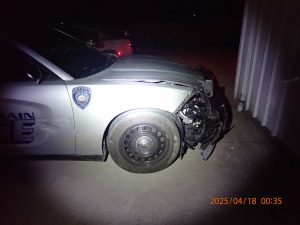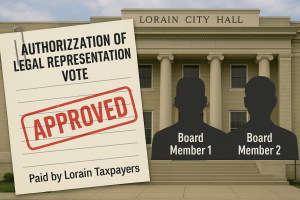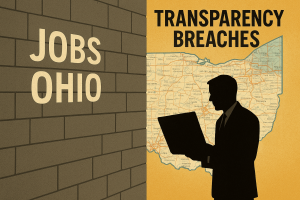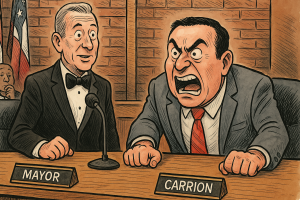From Taillights to Trials: The Racial Pipeline Entrapping Lorain’s Black and Brown Communities

How enforcement tactics and court mandates stack the odds against communities of color—from patrol stops to probation revocations—and what it will take to break the cycle.
Jun 07, 2025

The Color of Confinement
In Lorain County today, mass incarceration falls most heavily on Black and brown communities. When the 2000 Census counted residents on April 1, incarcerated individuals were tallied as county inhabitants—masking the true burden on neighborhoods of color. Of the 284,664 people called “residents,” 4,099 were behind bars. Yet more than half of those caged were Black, though Black people comprised just nine percent of the population. Two decades later, half-measures have barely budged these patterns. Adult lockups, juvenile halls, and even the state prison on the horizon remain stacked against communities of color.
How did we build a system that funnels young people from schools to snoops and scanners, from police lights to court gavel? And what will it take for Lorain County to reckon with its own complicity—from the beat of the patrol car to the pronouncement of the bench?
Thanks for reading Aaron’s Substack! Subscribe for free to receive new posts and support my work.
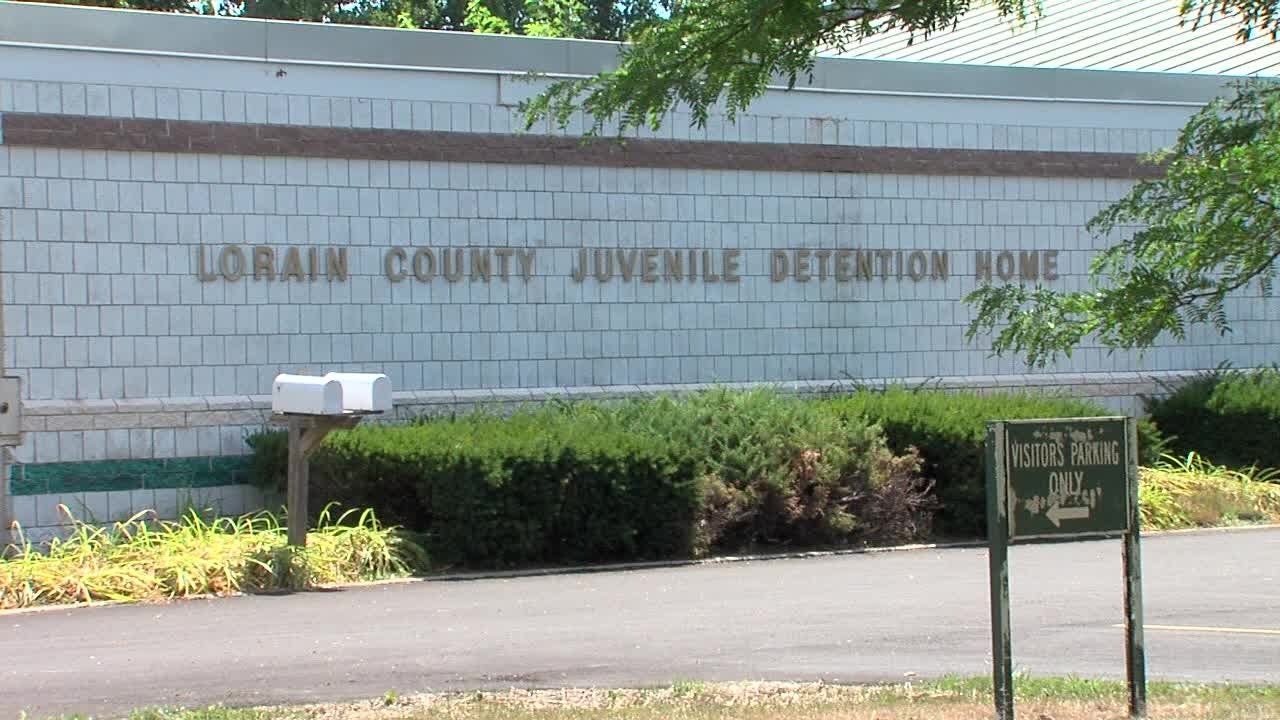
From Taillight Stop to Two Months Behind Bars
Adapted from the News 5 Cleveland feature by Homa Bash and Bridgette Pacholka (June 2022).* Read the Original Story here
Mia was days away from her high school graduation when a routine traffic violation spun into a felony weapons charge. In October 2021, she spent two months in the county juvenile lockup, an experience she describes as living in limbo, neither entirely punished nor truly helped. “They saw my record before they saw me,” she recalls.
It was only when the court tapped her for Crossroads—our county’s signature diversion program—that Mia found her footing again. Instead of a cell, she attended classes until bedtime, cooked meals in small groups, and sat in circles with counselors who listened. “For the first time, I felt like someone believed I could live a different life,” Mia says. Her success wasn’t a fluke. Since joining the national Juvenile Detention Alternatives Initiative, Lorain County has halved the detention rate for Black youth and diverted more than eleven hundred minor cases in under a year.
Yet this beacon of hope coexists with a chillier reality across the hallway and down the road: enforcement policies that push hundreds back into cells for low-level infractions, and courtroom practices that treat them as problems to be managed rather than individuals to be supported.

A Pipeline Forged in Lights, Cameras, and Court Gowns
The journey from street to steel door begins in patrol cruisers. Officially, the Lorain Police Department maintains that its patrol patterns follow crime statistics, emergency calls, and hotspot analytics rather than the racial makeup of neighborhoods. Yet Black and Latino residents persistently report heavier enforcement—more stops for minor infractions, more searches, more summonses—sparking painful questions about implicit bias and departmental priorities. The department itself admits its ranks do not yet reflect the community it serves, and has launched efforts to recruit more minority officers and engage with African American leaders. At the same time, multiple internal investigations into discrimination claims have concluded officers acted within policy, leaving critics to argue that policy itself demands scrutiny.
Once charged, defendants face the court system with little margin for error. Bond amounts and pretrial detention conditions hinge on wealth—or lack thereof—rather than the gravity of the alleged offense. Sentencing laws lock judges into rigid frameworks, forcing years behind bars for minor drug possession if statutory thresholds are met. And any misstep on probation—missing a scheduled meeting or failing a supervised test—triggers automatic returns to custody, often without meaningful judicial review of individual circumstances.
At a recent juvenile justice town hall, Judges Lisa Swenski and Colleen Glass both signaled that only serious gun‑related offenses truly warrant secure detention in the county’s facility, implying that everything else belongs in community‑based programs. Yet when I worked there, probation officers and Crossroads staff wielded the threat of sending a young person back to the detention home for even minor technical violations as the sole means to keep them “in line.” This contradiction—preaching leniency while enforcing fear—exposes how policy and practice can diverge in ways that perpetuate trauma rather than nurture growth.
In February 2023, citizens Mary and Joseph Hildreth watched as their 16‑year‑old son and two friends crossed West 27th Street to catch a bus, only to be flagged down by the Lorain Police Department’s Patrol Impact Team. Officers, citing jaywalking outside a crosswalk, said they suspected the teens might be armed after noting hooded sweatshirts in unseasonably mild weather, “clutching their waistbands,” and glancing around as they walked. The Hildreths filed a formal complaint alleging racial profiling and falsehoods in the incident report. In response, the department released the original traffic‑stop videos and a slide presentation documenting shots‑fired calls in the neighborhood, doorbell camera footage of an unrelated July 2022 shooting next door, and a history of two dozen prior calls to their address. The Office of Professional Standards ultimately found the officers’ actions within policy, but the tactics remain unchanged: hotspot patrols for minor violations that funnel young Black men into the same pipeline.
Sidebar: 2010 DOJ Review of the Lorain Police Department
In 2010, the U.S. Department of Justice completed an assessment of the Lorain Police Department after community concerns over use-of-force and recruitment. The report concluded there was no pattern or practice of excessive force requiring a formal consent decree, but it identified key areas for improvement—chiefly, the department’s inability to reflect the city’s racial diversity among its ranks.
- African Americans comprised roughly 15 percent of Lorain’s population but made up fewer than 5 percent of sworn officers in 2009.
- The DOJ recommended enhanced minority recruitment strategies, expanded cultural–bias training, and stronger community‐police dialogue forums.
- While the LPD swiftly implemented new outreach events and revised hiring protocols, long‐term staffing disparities persisted into the next decade.

Why Simply Blaming ‘Bad Actors’ Won’t Stick
It’s tempting to label this a matter of individual bias—poor choices by rogue officers or misguided judges. But the rot runs deeper:
Police budgets that balloon each year fund more patrols and more arrests, particularly for minor drug offenses. Meanwhile, investment in mental-health treatment, addiction services, and school counselors shrinks. Prosecutors chase efficiency in plea deals, prioritizing case clearance rates over community well‐being. And local sentencing laws mandate lengthy terms for nonviolent crimes, disproportionately ensnaring Black and Latino residents.
In one striking snapshot from 2002, Black adults in Lorain County were admitted to prison for drug offenses at nearly nineteen times the rate of their White peers. Across adult jails and the state prison system, Black people remain overrepresented. That isn’t the consequence of higher crime rates—it is the predictable outcome of policy choices.
Toward Data-Driven Redemption
If policy created this pipeline, policy can dismantle it. Lorain County’s success with Crossroads and JDAI offers a blueprint:
First, we must reframe how we measure our communities. Excluding incarcerated individuals from resident counts would expose the true per-capita rates and focus resources where they’re needed most.
Second, we must rebalance our budgets—shifting funds from expanded force deployments and extended pretrial detentions toward public-health initiatives in schools, community centers, and neighborhood clinics.
Third, we must restore judicial discretion by repealing mandatory-minimum rules that surrender every decision to statute instead of circumstance. Judges—Swenski and her colleagues—should guide sentencing to account for rehabilitation potential and community safety, not just statutory box-checking.
Finally, we must enlarge our circle of defense by fully funding public defenders and juvenile counsel, ensuring every person stands equal before the law.

Even Behind the Badge
Despite the rallying cry to “Back the Blue,” racism and profiling run deep within the Lorain Police Department itself. A veteran lieutenant was once pulled over on suspicion of being “incognito,” only for the stopping officer to admit he wouldn’t have acted had he known the driver was a colleague—caught profiling because he was Black. In the same department, bathroom walls bore the slur “N****r Please” for years before anyone intervened, and KKK placards hung in a supervisor’s office until public pressure forced their removal. Between covert “driving while Black” stops and epithets like “knuckle dragger” hurled at officers of color, these episodes remind us that bias inhabits our own precincts and roll calls.
“Back the Blue—until it happens to you” has become less a slogan and more a warning: the same shield meant to protect can, unchecked, become an instrument of harm within our community.
Reclaiming Justice for Every Neighborhood
When Mia crossed her graduation stage this spring, her diploma symbolized more than personal achievement. It was proof that justice, when centered on humanity instead of headcounts, can change lives. But Mia’s story cannot remain the outlier. From the patrol cruiser that lights up for a burnt-out taillight, to the detention cell that waits when probation conditions slip, to the judge’s bench that greets each case with worn procedures, every link in the chain demands accountability.
Lorain County can choose to govern by data and by compassion, to shift from counting cages to measuring community success. That choice starts today, in council chambers and sheriffs’ meetings, in budget debates and policy sessions. It ends when every young person—regardless of race—knows that the promise of freedom isn’t just a slogan, but a reality backed by action.
— Aaron C. Knapp is an investigative journalist and licensed social worker turned advocacy counselor in Lorain, Ohio.


